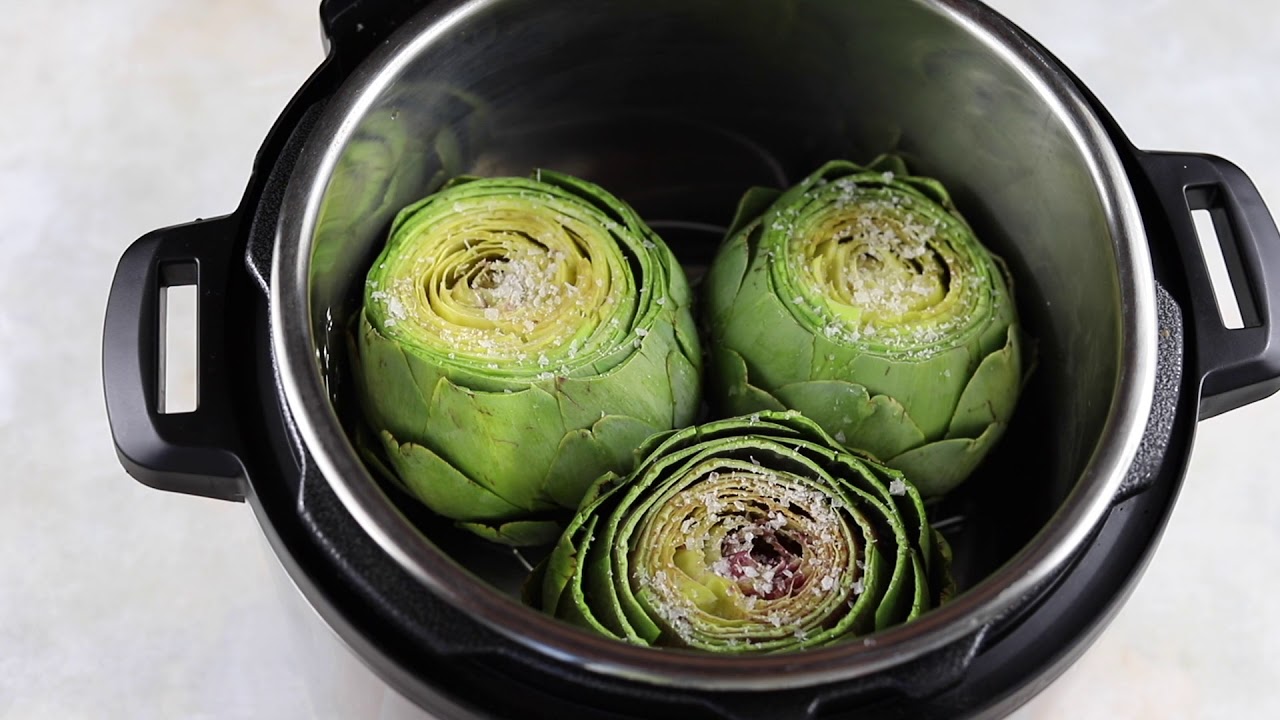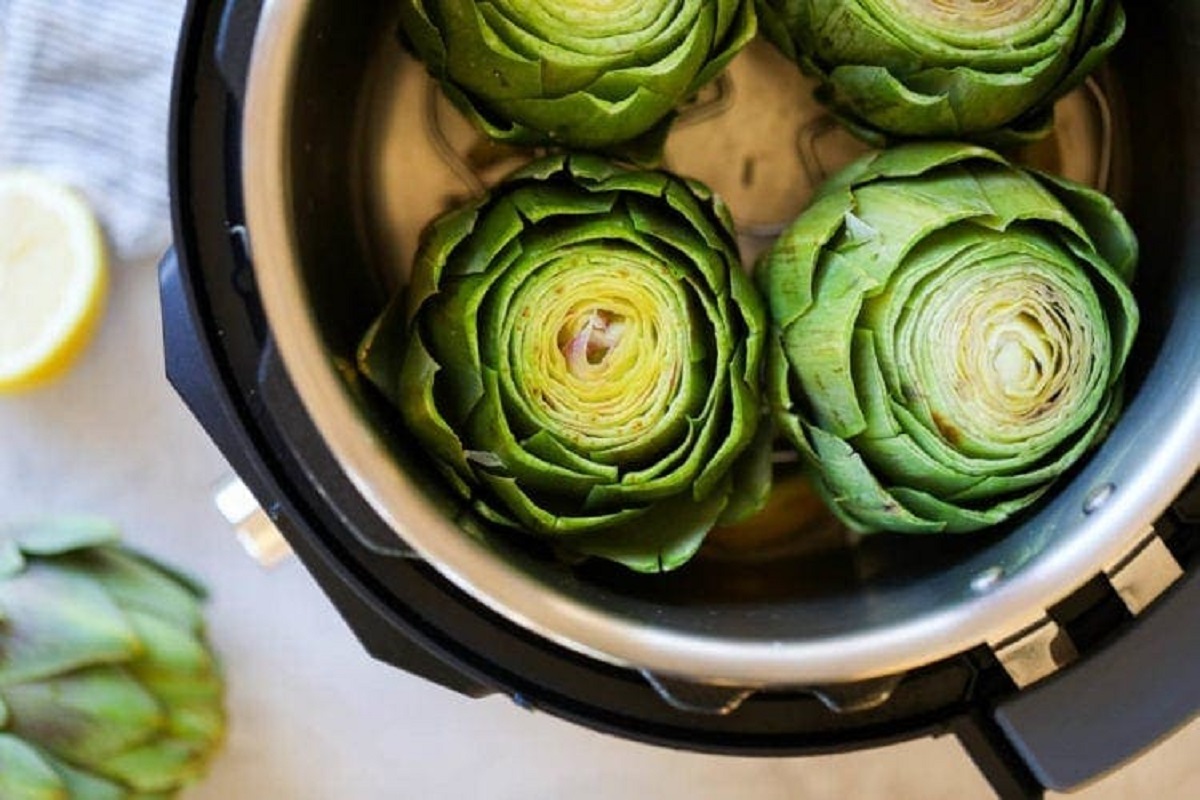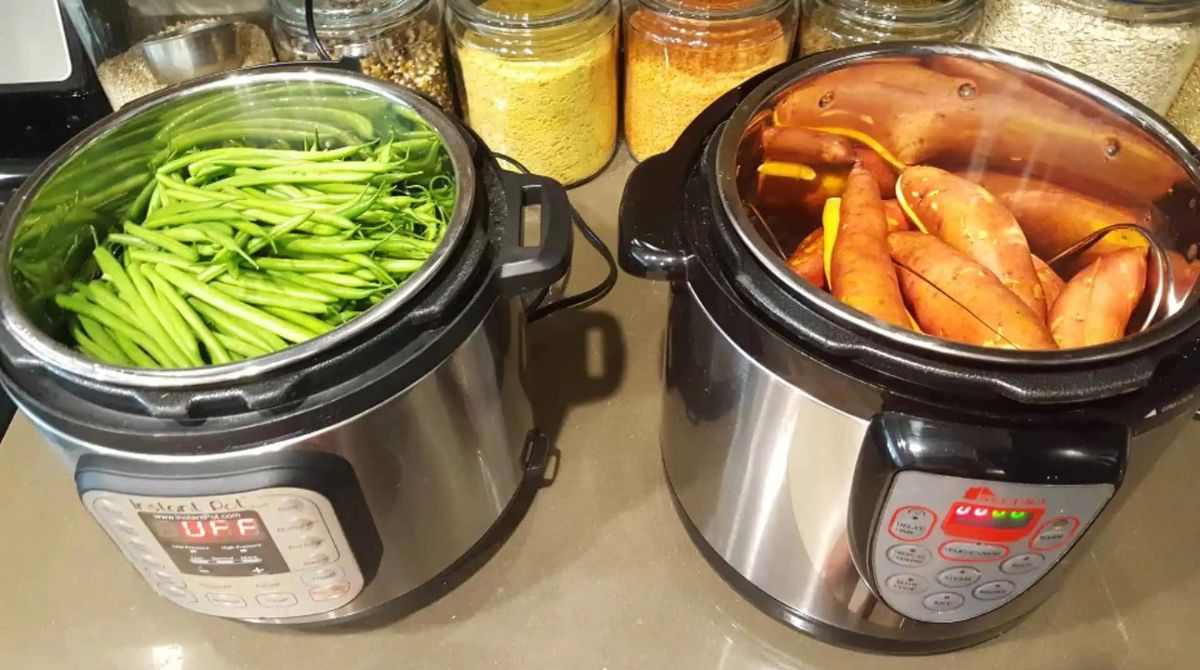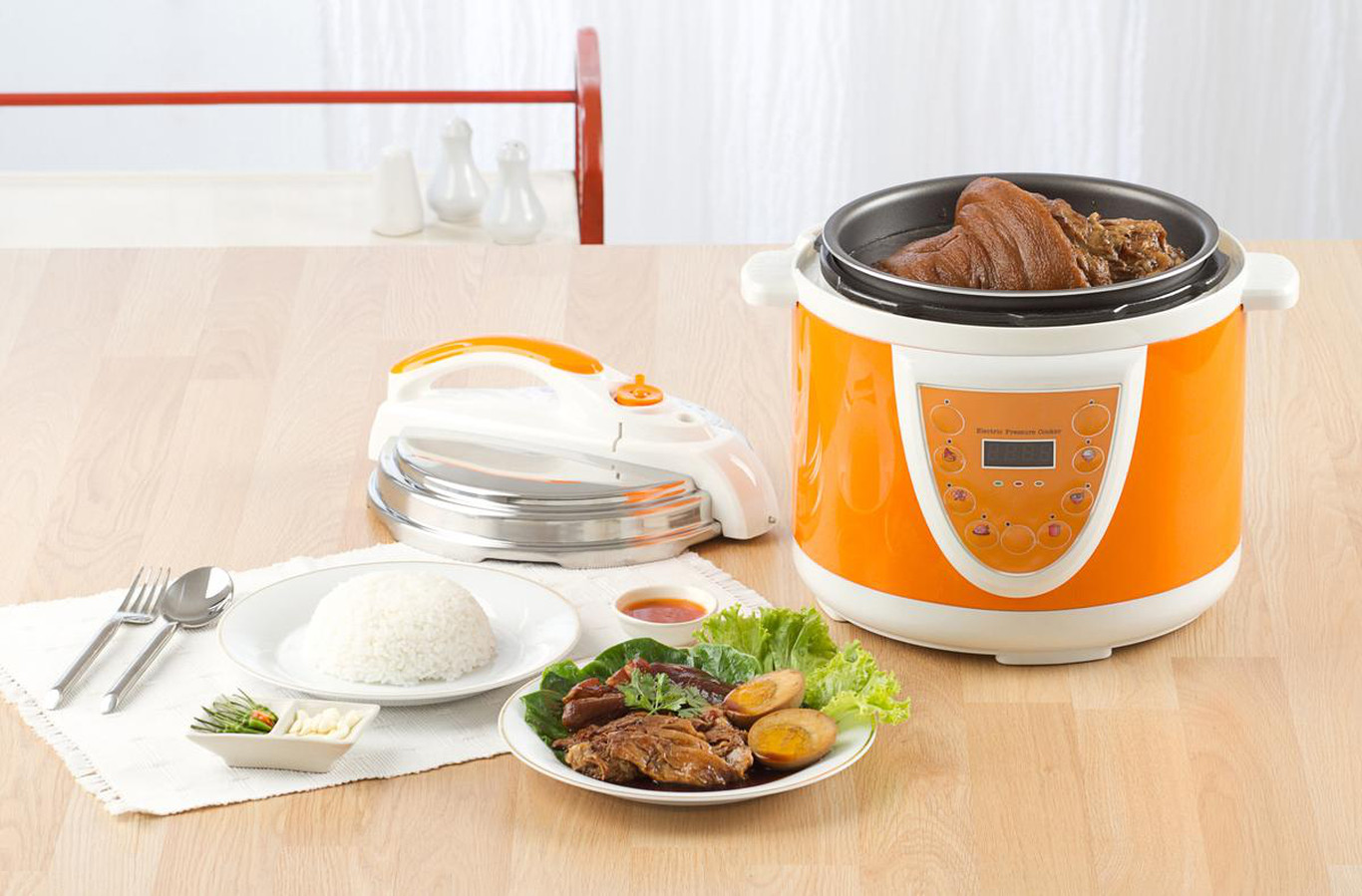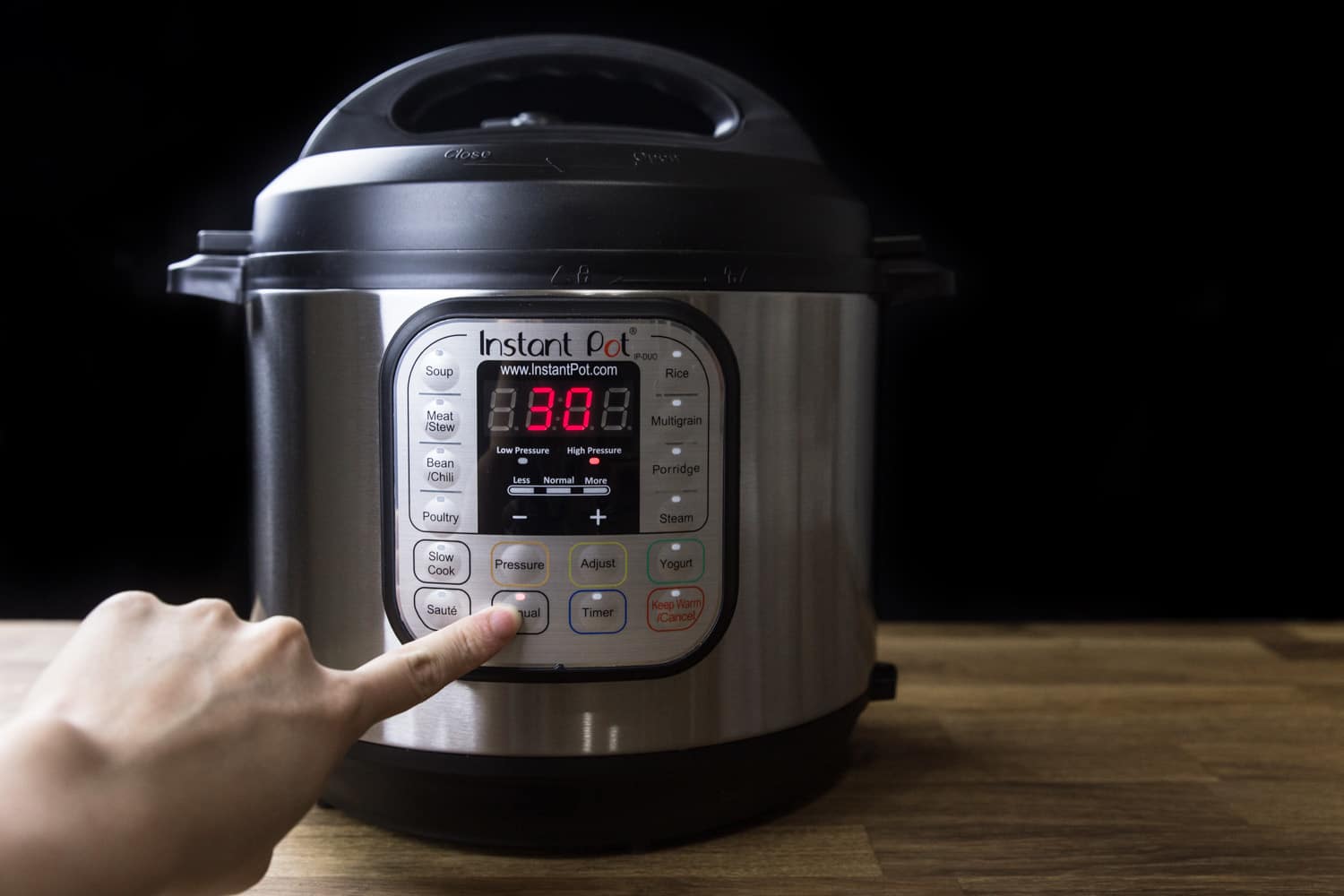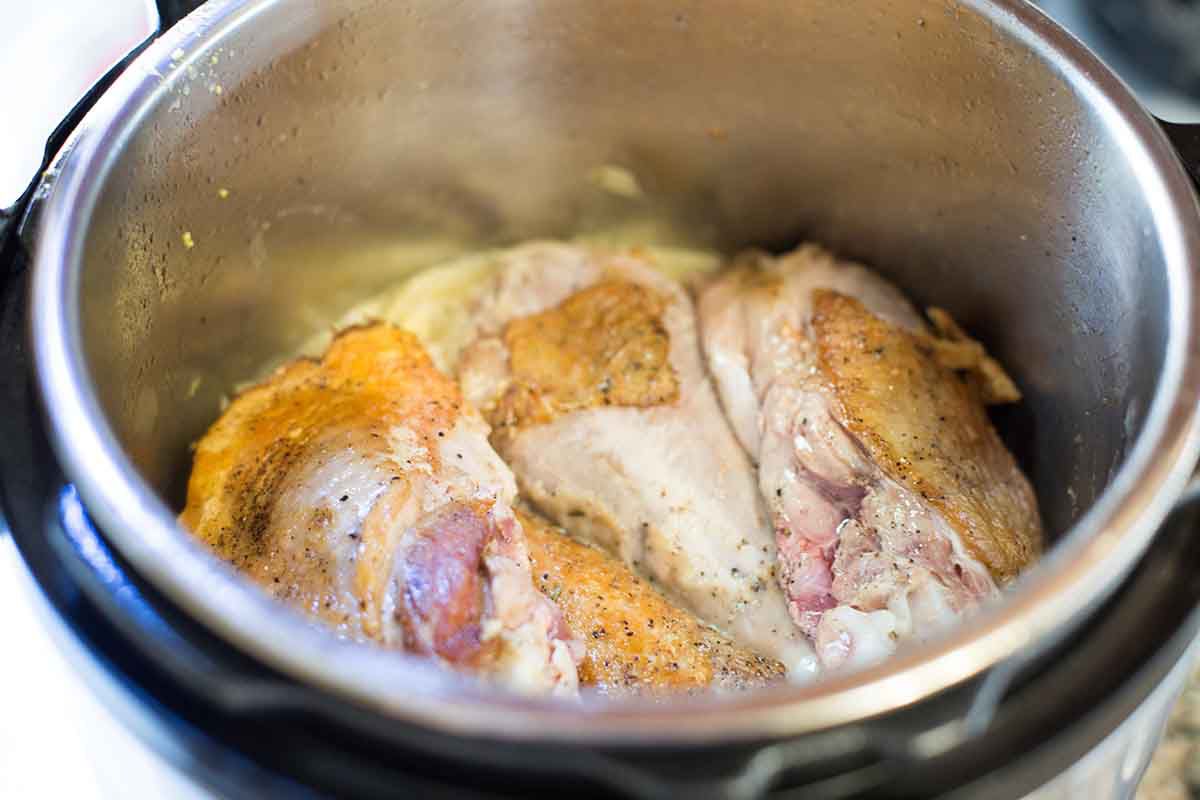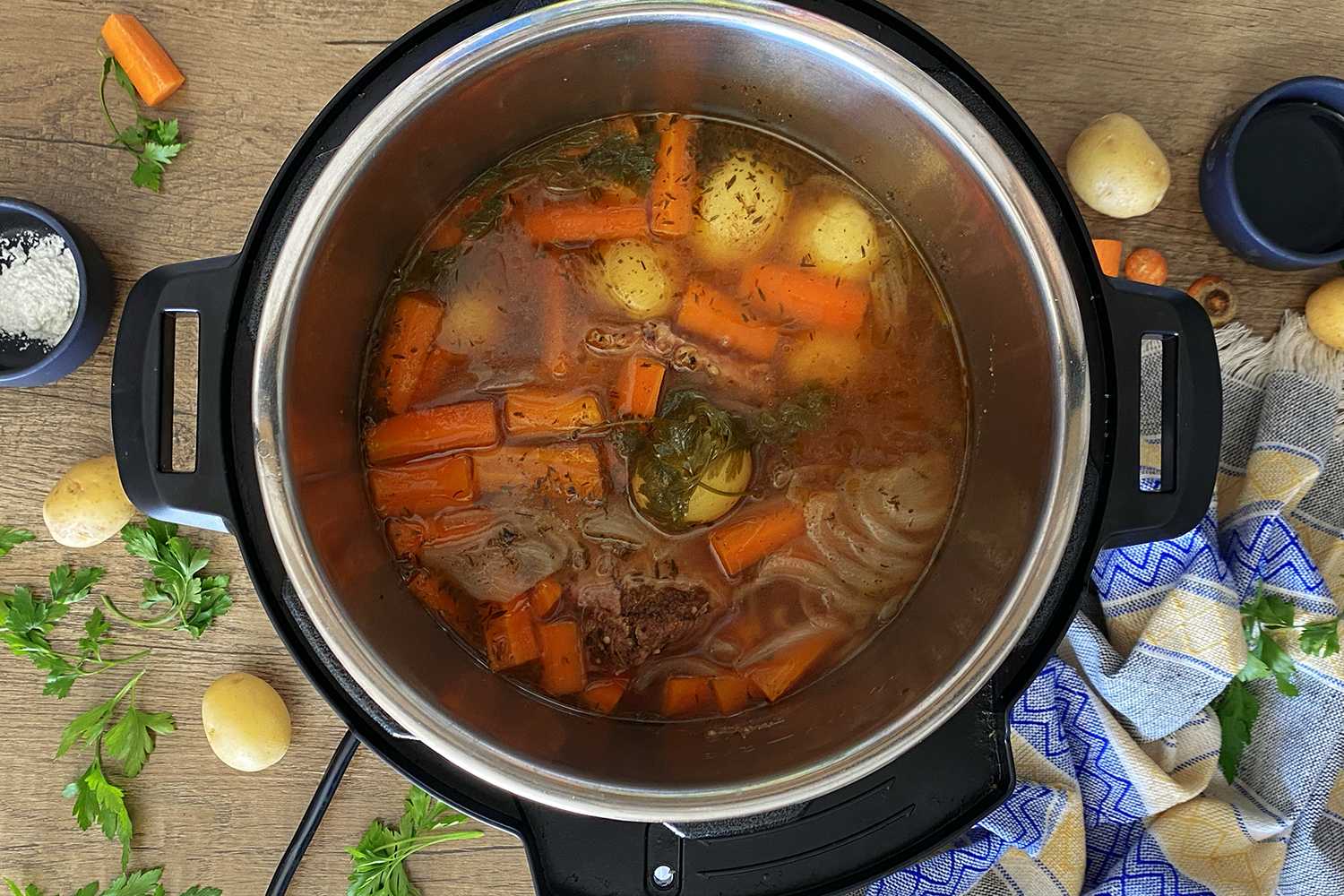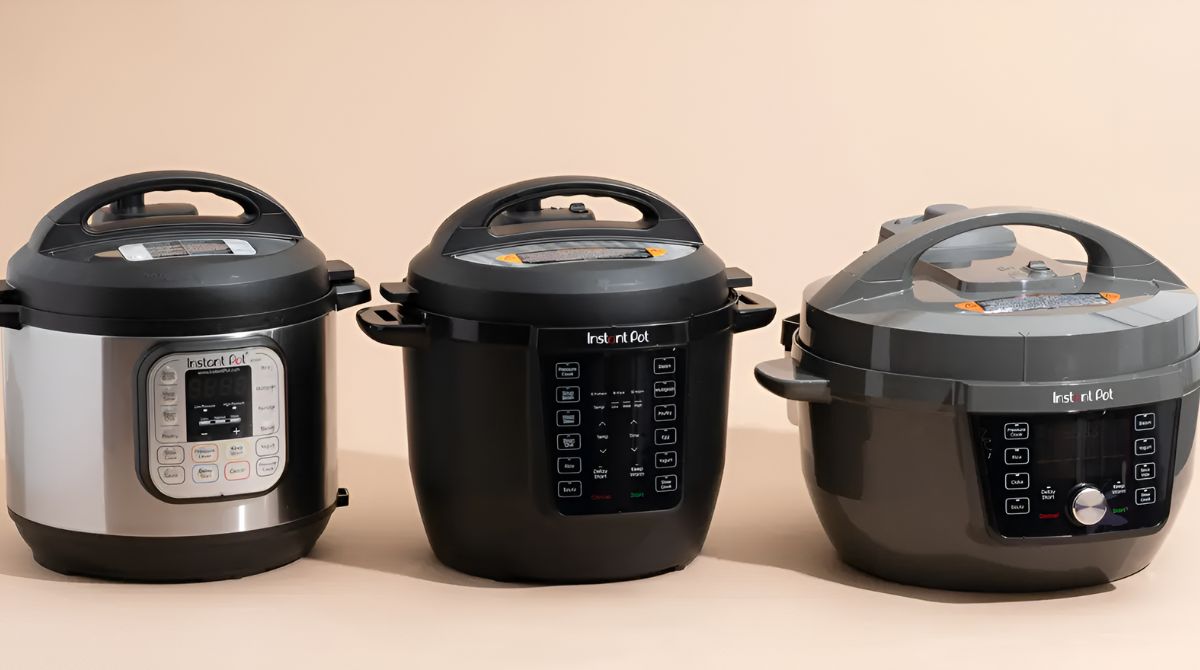Choosing the Right Artichokes
When it comes to cooking artichokes in an electric pressure cooker, selecting the right ones is crucial for achieving the best results. Here are a few key points to keep in mind when choosing artichokes:
- Variety: Artichokes come in different varieties, such as globe artichokes and baby artichokes. Globe artichokes are larger and typically used for stuffing or steaming, while baby artichokes are smaller and more tender, making them ideal for various recipes. Consider your preferred cooking method and recipe to determine the most suitable variety.
- Freshness: Look for artichokes that are fresh and vibrant in color. The leaves should be tightly packed and not shriveled or wilted. Gently squeeze the artichoke — it should feel firm and not be overly soft or mushy.
- Size: Consider the size of the artichokes. Larger artichokes are great if you’re looking for a substantial main course or stuffed artichokes, while smaller ones work well for appetizers or side dishes.
- Seasonality: Artichokes have a peak season during spring, from March to May, when they are at their freshest and most flavorful. However, you can often find them in supermarkets year-round. If possible, try to purchase artichokes during their peak season to enjoy the best taste.
- Appearance: Look for artichokes with vibrant, green leaves. Avoid any that have brown or black spots, as this may indicate spoilage.
By selecting the right artichokes, you’ll set the foundation for a delicious and satisfying dish. Remember to consider the variety, freshness, size, seasonality, and appearance of the artichokes before proceeding with the cooking process.
Preparing the Artichokes for Cooking
Before you can cook artichokes in an electric pressure cooker, it’s important to properly prepare them. Follow these steps to get your artichokes ready:
- Trimming the Leaves: Start by removing any tough or thorny leaves from the base of the artichokes. Use a sharp knife to trim the top quarter of the artichoke, cutting off the pointed tips. This will help make them easier to eat later on.
- Removing the Choke: The choke is the inedible, fibrous part of the artichoke located in the center. Gently spread apart the leaves to reveal the choke. Using a spoon or melon baller, carefully scoop out the choke, being careful not to damage the heart or tender inner leaves.
- Rinsing and Draining: Rinse the artichokes under cold running water to remove any dirt or debris. To ensure the artichokes cook evenly, shake off any excess water and allow them to drain upside down.
- Optional: Steaming or Soaking: If desired, you can pre-steam or soak the artichokes before pressure cooking. Steaming the artichokes for a few minutes will help speed up the cooking process in the pressure cooker. Alternatively, you can soak them in lemon water for about 30 minutes to prevent browning and add a subtle citrus flavor.
- Additional Trimming: Take another look at the artichokes and make any additional trims if needed. For example, you may want to remove any remaining tough outer leaves or trim the stem. The stem can be peeled and cooked alongside the artichokes or removed entirely, depending on your personal preference.
By taking the time to properly prepare the artichokes, you’ll ensure a more enjoyable dining experience. Remember to trim the leaves, remove the choke, rinse and drain the artichokes, and consider optional steps like steaming or soaking. With the artichokes prepared, you’re now ready to move on to the next phase of cooking in the electric pressure cooker.
Adding the Ingredients to the Electric Pressure Cooker
Now that your artichokes are prepared, it’s time to add them to the electric pressure cooker along with some additional ingredients to enhance the flavor. Here’s what you need to do:
- Liquid: Start by adding a liquid to the pressure cooker. This can be water, vegetable broth, or a combination of both. The liquid will provide the necessary steam to cook the artichokes and infuse them with flavor.
- Seasonings: To enhance the taste of the artichokes, add seasonings to the liquid. Popular choices include salt, pepper, garlic powder, lemon juice, or herbs like thyme or parsley. Experiment with different combinations to find your preferred flavor profile.
- Other Ingredients: Consider adding other ingredients to the pressure cooker to enhance the overall dish. This could include sliced onions, minced garlic, chopped carrots, or even a splash of white wine. These additional ingredients will add depth and complexity to the final result.
- Arrange the Artichokes: Carefully arrange the prepared artichokes in the pressure cooker, making sure they fit comfortably and are not overcrowded. If needed, you can stack them on top of each other, but avoid packing them too tightly.
- Optional: Drizzle with Olive Oil: For added richness, you can drizzle a bit of olive oil over the artichokes. This will help infuse them with a delicious, subtle flavor and prevent them from drying out during the cooking process.
Once you’ve added all the ingredients to the electric pressure cooker, make sure to secure the lid tightly. This will ensure that the steam and pressure build up properly for efficient cooking. Now that everything is set, you’re ready to move on to the next step – setting the cooking time and pressure setting on the electric pressure cooker.
Setting the Cooking Time and Pressure
Now that your artichokes and other ingredients are in the electric pressure cooker, it’s time to set the cooking time and pressure level. The precise settings will depend on the size and tenderness of your artichokes, as well as personal preference. Follow these guidelines to ensure perfectly cooked artichokes:
- Cooking Time: For whole artichokes, a general guideline is to pressure cook them for 6 to 8 minutes on high pressure. If you’re using baby artichokes or smaller ones, reduce the cooking time to 4 to 6 minutes. However, it’s important to note that cooking times may vary based on the specific model of your electric pressure cooker.
- Pressure Level: Most electric pressure cookers have a default pressure setting of high. This is typically the recommended setting for cooking artichokes. However, if your pressure cooker allows you to adjust the pressure level, you can try using the high pressure setting for firmer artichokes and the medium pressure setting for more tender artichokes.
- Preheating: Some electric pressure cookers require preheating before the cooking program starts. Refer to the manufacturer’s instructions to determine if preheating is necessary and follow the recommended steps.
- Keep Warm Function: If your electric pressure cooker has a keep warm function, make sure it is turned off before starting the cooking process. This will prevent the artichokes from overcooking or becoming mushy if left in the cooker for an extended period.
Setting the cooking time and pressure properly is essential for achieving tender and flavorful artichokes. Follow the recommended guidelines for cooking time and pressure level, and adjust as needed based on the size and tenderness of your artichokes. Once you’ve set the cooking time and pressure, it’s time to decide between a natural release or quick release.
Natural Release or Quick Release: Which One to Choose?
After the cooking time is complete, you’ll need to release the pressure from the electric pressure cooker before opening the lid. There are two primary methods for releasing pressure: natural release and quick release. The choice between the two depends on your preference and the desired outcome for the artichokes:
- Natural Release: The natural release method allows the pressure to dissipate naturally over time. This is done by simply leaving the pressure cooker untouched after the cooking cycle is completed. Natural release is typically recommended for recipes that require a longer cooking time or delicate ingredients, such as artichokes. It allows for a gentle and gradual reduction in pressure, which helps to maintain the integrity of the artichokes and prevents them from becoming mushy. Let the pressure cooker sit for 10 to 15 minutes for a partial natural release or wait until the pressure valve drops completely before opening the lid.
- Quick Release: The quick release method involves manually releasing the pressure immediately after the cooking cycle is complete. To perform a quick release, carefully turn the pressure release valve to the venting position. Be cautious of the hot steam that will escape from the pressure cooker. Quick release is suitable for recipes that require a shorter cooking time or for those who are short on time. However, keep in mind that rapid pressure release can cause the artichokes to become slightly overcooked and softer in texture.
Both the natural release and quick release methods have their advantages and considerations. If you prefer tender and perfectly cooked artichokes, opt for the natural release method. However, if you’re pressed for time, you can use the quick release method with the understanding that the artichokes may be slightly softer. Choose the method that aligns with your preferences and the outcome you desire for your cooked artichokes.
Removing the Cooked Artichokes from the Pressure Cooker
Once the cooking process is complete and the pressure has been released, it’s time to remove the cooked artichokes from the electric pressure cooker. Follow these steps to safely extract the artichokes:
- Turn Off the Pressure Cooker: Before handling the pressure cooker, make sure it is turned off and the pressure has been fully released.
- Use Oven Mitts or Silicone Gloves: It’s essential to protect your hands from the hot surfaces of the pressure cooker. Wear oven mitts or silicone gloves to avoid any burns.
- Lift the Lid Carefully: Open the lid of the pressure cooker away from you to avoid any potential steam burns. Lift it slowly and steadily, allowing any remaining steam to dissipate.
- Remove the Artichokes: Using tongs or a slotted spoon, carefully lift the cooked artichokes out of the pressure cooker. Be mindful of the hot liquids that may be present in the cooker.
- Allow Them to Cool: Place the cooked artichokes onto a plate or cutting board and let them cool for a few minutes before serving. This will not only make them easier to handle but also allow any excess steam to evaporate.
- Optional: Strain and Reserve the Cooking Liquid: If desired, you can strain the cooking liquid from the pressure cooker and reserve it for later use. The flavorful liquid can be used for dipping sauces, soups, or even as a base for other recipes.
By following these steps, you’ll safely extract the cooked artichokes from the pressure cooker. Remember to use oven mitts or silicone gloves, lift the lid away from you, carefully remove the artichokes, allow them to cool, and consider reserving the cooking liquid for future culinary endeavors. Now that the cooked artichokes are ready, it’s time to serve and enjoy!
Serving Suggestions and Additional Tips
Now that you have beautifully cooked artichokes, it’s time to think about how you want to serve them and any additional tips to enhance your dish. Here are some serving suggestions and tips to consider:
- Dipping Sauces: Artichokes pair well with a variety of dipping sauces. Classic options include melted butter, aioli, hollandaise sauce, or a tangy vinaigrette. Experiment with different flavors to find your favorite combination.
- Garlic and Herb Butter: Elevate the flavors of your cooked artichokes by melting some garlic and herb butter. Simply melt butter in a saucepan, add minced garlic and your favorite herbs (such as parsley, thyme, or rosemary), and drizzle over the artichokes.
- Stuffed Artichokes: If you have large artichokes, consider stuffing them with a delicious filling. Common stuffing ingredients include breadcrumbs, Parmesan cheese, herbs, garlic, and olive oil. Bake the stuffed artichokes in the oven for a flavorful and elegant presentation.
- Serve as a Side Dish: Cooked artichokes can be served as a side dish, complementing a variety of main courses. They pair well with grilled meats, roasted chicken, fish, or even pasta dishes. Their mild, earthy flavor adds a delightful touch to any meal.
- Leftover Artichokes: If you have leftover cooked artichokes, they can be stored in an airtight container in the refrigerator for up to 3-4 days. Use them in salads, pasta dishes, or as part of a charcuterie board for a delicious and versatile addition.
- Artichoke Hearts: After removing the outer leaves, the tender artichoke hearts can be used in various dishes. They can be chopped and added to salads, pasta sauces, pizzas, or used as a topping for bruschetta.
Remember to have fun and get creative with your cooked artichokes. Explore different serving suggestions, experiment with flavors, and don’t be afraid to try new recipes. With these additional tips, you’ll be able to showcase your perfectly cooked artichokes in a variety of tasty ways.







